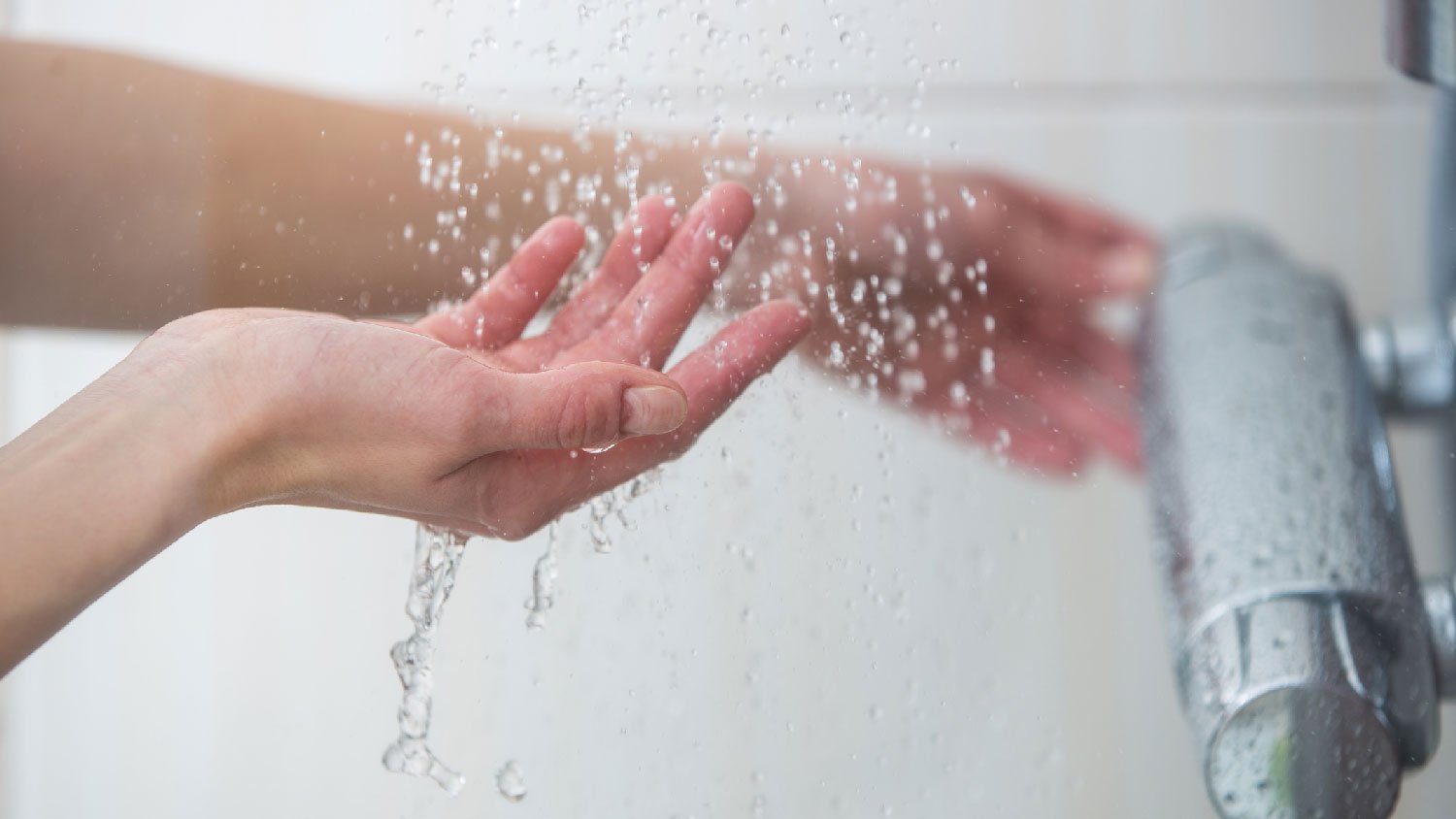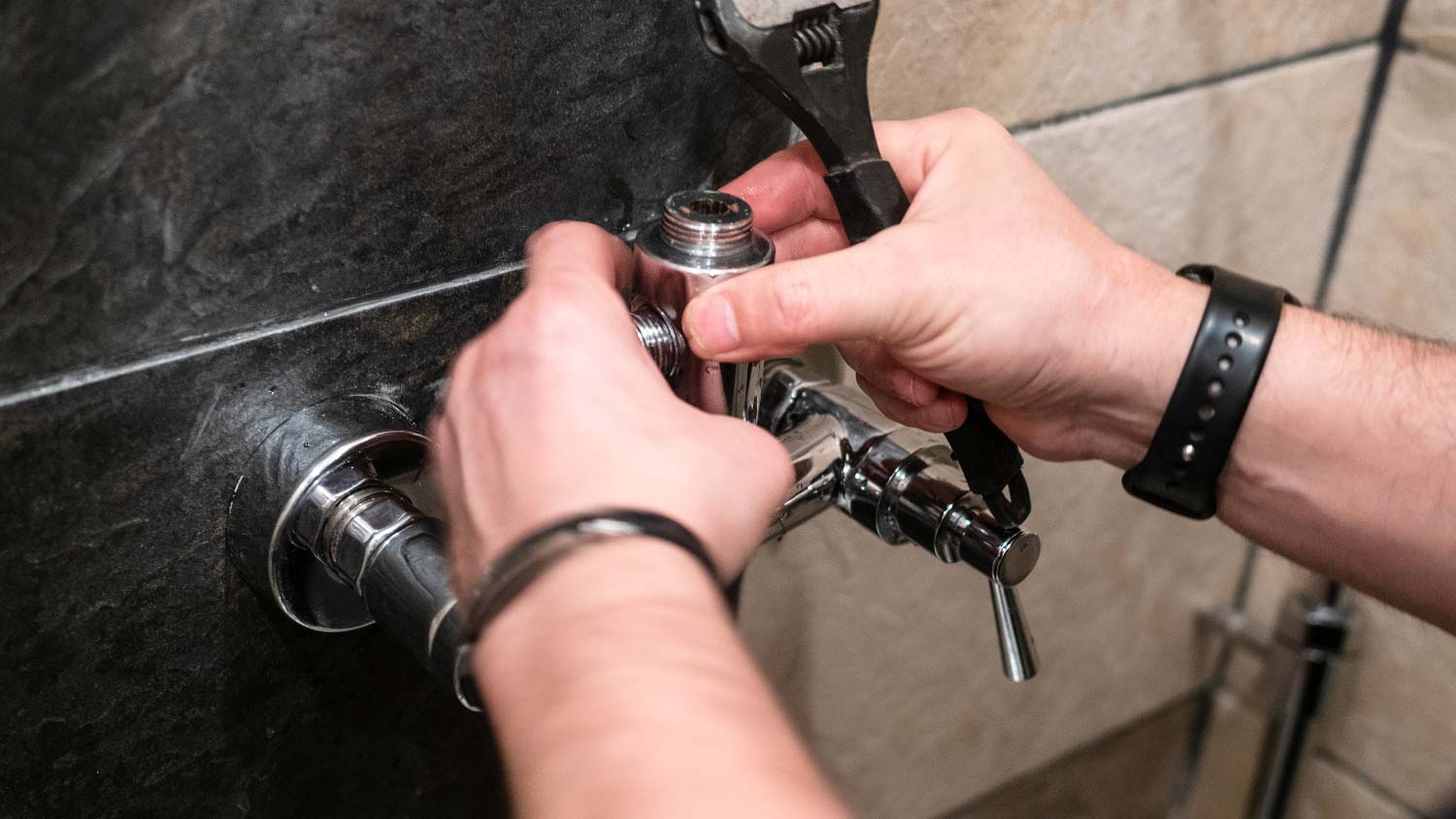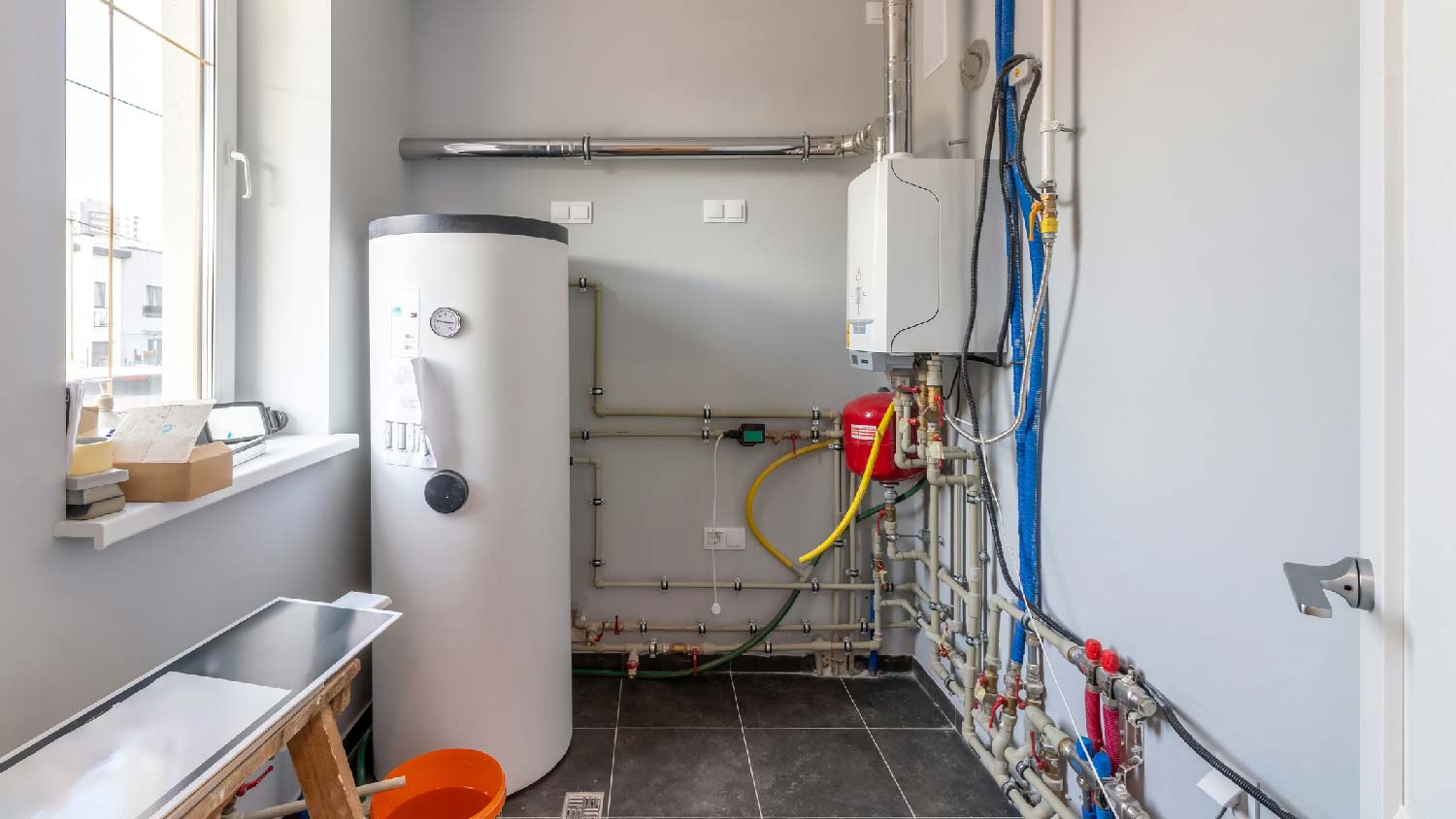
The average propane tank costs between $600 and $2,500, depending on the size, location, and more. Our expert guide explores all the factors.
Chilly reasons you’re trembling in the shower


A bad mixing valve and an incorrectly set anti-scald device are the primary reasons shower water, but not sink water, is cold.
A broken water heater or a depleted hot water supply could also cause cold water in your shower.
A handy homeowner can readjust the anti-scald device, but mixer valve replacement and water heater repairs are best left to a plumbing pro.
There’s nothing worse than getting into the shower only to be blasted with freezing water. And if your sink water is warm, the problem is even more baffling. This guide explains the four potential reasons your shower water is cold but the sink is not—and, more importantly, how to fix it so you can go back to enjoying steamy showers.

The shower mixing valve is located in the temperature handles and regulates the amount of water that’s drawn from the hot and cold taps and sent to your shower head. If it’s broken or worn out, it can draw too much cold water and make for an unpleasant shower experience.
A broken mixing valve needs to be replaced. Even an experienced DIYer will have trouble replacing this part, so it’s best to call in a local plumbing repair pro to complete the job.
The shower’s anti-scald device is a safety feature that prevents the shower handle from rotating too far toward the hot water setting. If it’s set incorrectly, your shower might not get enough warm water, leaving you in the cold.
Adjusting the anti-scald device can warm up your shower water. You can do this yourself by removing the head or handle from the faucet and twisting the white plastic anti-scald device toward the right slightly. Test the temperature and readjust if necessary.

Your shower water could be cold because your water heater isn’t working properly. It could have broken parts or a malfunctioning thermometer, which means the water isn’t being heated to the proper temperature. However, if this is the case, water coming from the sink faucet will be cold as well.
Call in a plumber to check whether your water heater needs fixing. Water heater repair costs between $220 and $990, depending on the part that’s broken and the complexity of the repair.
Did someone in your household take a long, hot shower or bath? If you have a tank water heater, it’s possible they depleted the hot water supply, leaving your shower head cold. However, if this is the cause, your other sink fixtures will also be cold.
Wait 30 minutes to allow the water to reheat, then check the temperature in your shower. If this happens frequently, consider installing a tankless water heater, which costs $1,400 to $3,890 to install.
If you’re comfortable with DIY, you can adjust your shower’s anti-scald device yourself with little to no previous experience. And if a depleted hot water supply causes the issue, the solution is simply to wait.
However, certain repairs, like replacing a mixer valve or inspecting the water heater for broken parts, are best left to a pro. You can also call in a pro to adjust the anti-scald device if you’re not comfortable doing it yourself.
From average costs to expert advice, get all the answers you need to get your job done.

The average propane tank costs between $600 and $2,500, depending on the size, location, and more. Our expert guide explores all the factors.

The cost to add plumbing to a detached garage depends on several factors, including the type of plumbing and the garage's distance from your home.

Wondering how much it costs to reroute plumbing? We have the information you need to learn about plumbing vent pipes and cost considerations when installing them.

If the temperatures plummet below 20 degrees, you should pay attention to your home’s pipes. Learn what to do if pipes freeze, and how to prevent them from bursting.

Is the water pressure in your shower lacking? Here are common solutions to increase it so you can enjoy your showers again.

Finding frozen pipes involves using all of your senses to listen for, smell, and see the signs. Keep reading to learn how to find frozen pipes in your home.